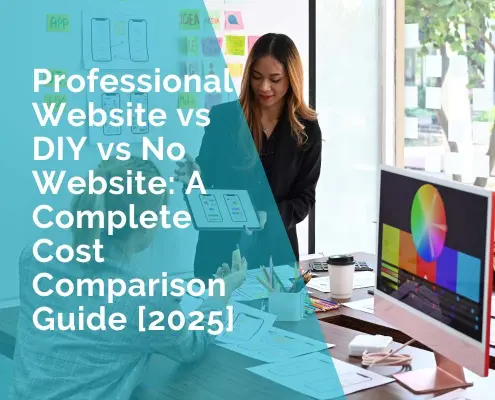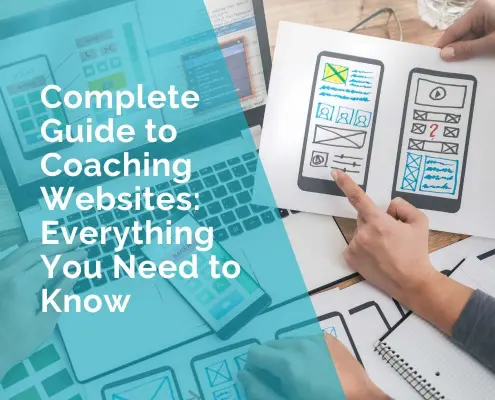SEO Writing: The 10 Rules for Creating Optimized Content
With 68% of online experiences starting with a search engine, it is a big part of how people make purchase decisions. The success of your business depends on whether you rank on Google’s first page when your potential customers search for something.
The best way to achieve this is by publishing high-quality content optimized for search engines. By answering your readers’ search queries, you can boost your website’s traffic, improve brand awareness and increase leads.
In this post, we’ll discuss SEO writing techniques you can use to improve and optimize your content.
What Is SEO Content?
SEO refers to search engine optimization. It is the process of improving your website’s visibility on Google, Bing, and other search engines.
Meanwhile, content is any information posted online, including blogs, articles, product descriptions, landing pages, guides, videos, infographics, and more.
SEO content is vital for enhancing your website’s search engine ranking. More optimized content means higher-ranking search engine results. It also increases the possibility of gaining attention from your target market.
Rules for SEO Writing
Make yourself appear knowledgeable about your niche to your visitors. Try these tips to develop optimal digital content.
1. Use the Right Keywords.
Keywords are terms, phrases, or words people enter into the search engine. Search engines try to match search keywords to the content that can best answer a given query. If your content has the same keywords, search engines can rank your content higher.
Example: You’re a photographer in Oregon, and you want your website to be visible to people who live there. Think about how people may search for photographers in your area. What are the search terms that they may use?
You can improve your SEO by creating a blog post about “Why You Need a Professional Photographer for Your Events.” Within the post, use target keywords that your customers are searching for, like ‘photographers in Oregon,’ to help you start.
Before you start using free or paid tools to find keywords, make sure you invest in learning the art of keyword research. Many online courses teach how to conduct keyword research to improve your website’s SEO. Finding the right keyword that you can realistically rank for is crucial.
Once you start writing, don’t try to insert too many keywords in the first paragraph. Instead, strategically add them throughout your post to make it natural to the readers. Search engines do not like posts stuffed with keywords that offer no value to readers.
2. Fix Your Content Structure.
Once you have your content topic and keyword, you must ensure that your content structure is optimized. Use header tags (H-tags) for headings and subheadings. It makes your blog readable and clean.
H-tags rank from H1 to H6 depending on the importance of the statement. You can include keywords in each heading to make it optimized.
Here’s how to use H-tags:
H1 (Post Title): You can add keywords here to let your audience and the search engine know the main idea for the content. For example, in this post, the H1 tag is “SEO Writing: The 10 Rules For Creating Optimized Content.” The target keyword in our title is ‘SEO writing.’
H2 (Subheadings): H2 tags can help you organize your content’s main points. It also separates each idea and makes the content easier to read and understand. You’ll see the subheadings after our intro: “What is SEO content?” followed by “Rules of SEO Writing.”
H3 (Subsections): Use this tag for listing points, thoughts, and ideas below the subheadings. In this post, we have used H3 tags to enumerate the rules of SEO writing to explain what’s in our H2, “SEO Writing Rules.”
H4 to H6 (Subsections): You can use these h-tags if you need to clarify more points.
You can easily assign H tags in Google Docs by highlighting the text and selecting a header option in the Format -> Paragraph Styles menu.
3. Include Title Tag and Meta Description.
A title tag is the title of your page, and the meta description is a summary of your website or content page displayed in the search snippet of the search engine results page (SERP).
You can optimize meta descriptions for every post. Add a few keywords to the title and the description. The optimal length for meta descriptions is about 50 to 160 characters. Provide value by explaining what the content is about using a few words.
Here’s an example of how a title tag and meta description appear on Google:

If your description is longer than 160 characters, Google will trim it. You can see that this example also includes the keywords “best burgers,” “top burger spots,” and “top burgers” in the title and meta descriptions.
4. Don’t Forget the Image Alt Text.
‘Alt text’ is a short description of your content’s video or photo. It provides context to search engine crawlers to index your visual elements correctly. When your image is properly indexed, search engines will understand what your content is about, which might help your SEO ranking.
This list can help you create good alt text:
- Keep it short
- Make it accurate
- Avoid adding lots of keywords
- Don’t say obvious things like “this is a picture of…”
- 125 characters or less would work well
Here’s an example:

For this photo, you can use “golden retriever puppies” or “five golden retrievers in nature” for your alt text.
You can add alt text when you upload and use a media file on your posts on a content management system (CMS) like WordPress.
Aside from its SEO purpose, alt text is also helpful for screen readers. Write descriptions that closely match the image. It makes your content more accessible to the visually impaired.
5. Optimize URL Structure.
Your URL is not optimized if your web page looks like this:
“https://www.examplesite.com/Default.aspx?catid=12345”
When publishing a post, you can edit your URLs to make them more reader-friendly and easy to remember. It also optimizes your content because search engine bots find it easier to crawl and index your website if it has a relevant keyword and content for the searchers.
Make sure to change your URL structure before publishing your content.
Here are some guidelines from Google about URL structure.
6. Link To Related and Reliable External Sources.
Don’t hesitate to include links to sources other than your own. It may seem like you’re driving away your website visitors. However, adding credible sources and linking to authoritative content increases your own website’s credibility.
For SEO purposes, external links are valuable because it helps search engines determine the quality and authority of your content. One of the ways Google ranks pages is based on the quality and quantity of links. It also lets search engines like Google know your topic and understand your expertise.
7. Add Internal Links.
Internal linking is about linking to relevant, high-quality content from your website. More internal links from your content can help search engines discover and index your new content faster.
The content is sorted and bundled on-site by their topic. By focusing the site structure on certain themes and aggregating relevant content, a site can increase its rank for the target keywords.
You can use siloing or content silo – a strategy for structuring and organizing your site’s content by topic or theme. By complementing your anchor posts with related sub-topics, and relevant internal links between each, you can rank better for your target keywords.
If the links point to informative, relevant content, it helps search engines and readers discover your posts and understand the content better.
For example, we created an anchor post that reviews and ranks various AI text generators. To optimize this post, we added internal links to detailed reviews that enhance a reader’s understanding of specific software on the list.
8. Write Evergreen Content.
Evergreen content stays relevant for a long time. Once you publish evergreen content, you don’t have to update the post very often since it doesn’t go out of date—hence the name evergreen.
Some formats you can use are tutorials, FAQs, listicles, how-to content, product reviews, or videos. Here are some tips for writing evergreen content:
Write for newbies – People who don’t have a lot of knowledge about your expertise may need your help. Show your knowledge on a specific topic related to your business that can help your new audience.
Write about specific topics – Readers will stay longer on your website if they find what they need in one blog post. Try to answer the search query that you are targeting directly. For example, if your audience is searching for “How to do the Heimlich maneuver on yourself,” answer that directly. Don’t go too deep into the history, adoption, medical studies, etc., of the Heimlich maneuver before answering what the search is looking for.
Do not use jargon – Technical and industry language may confuse beginners. Also, try to avoid acronyms.
9. Update Existing Content.
You don’t always have to churn out new content to improve your SEO. Turn an old blog post into something more practical for your audiences today.
Check out these tips that help improve old content.
Don’t rewrite everything – Focus on a few paragraphs. It can be the intro of your blog to grab your reader’s attention or an old claim you want to change.
Remove outdated links and information – Replace them with recent, reliable sources to improve the value of your content and your internal or external linking strategies.
Change the visual elements – If you’re changing the photos or videos of your content, make sure to change the alt text as well. If the post is related to a product or service you offer, you can choose a high-quality image to make it look fresh and appealing.
Check the structure of your content – Ensure that your headings, subheadings, meta description, and title tag match your updated content.
10. Write for Humans.
Lastly, write for your readers and not just the machine. When you create irrelevant content and stuff unnecessary keywords in your writing, the visitors will quickly navigate away from your article, indicating that your content is not good enough. This will draw Google’s attention and negatively affect your SEO.
Start Writing Search Engine Optimized Content Today.
You might have the most helpful content that satisfies everyone’s questions or needs. However, it’s worth nothing if nobody is reading your content.
Google will match search intent with your website’s articles when users enter queries or keywords based on the information within your content.
Following the SEO writing tips in the article will rank your content higher in search results. Overall, you must prioritize writing great content based on the needs of your target audience to write successful SEO content.
***
Author Bio
Ash & Pri are the founders of AshandPri.com, where they empower readers to make smart money decisions across all aspects of life.
After achieving their FIRE goals in their 30s, they launched their blogging business in late 2021 and scaled it up quickly to generate a consistent income within a few months.
You can find their expert financial advice & tips featured on sites like Forbes, GoBankingRates, Apartment Therapy, MSN, and more.











